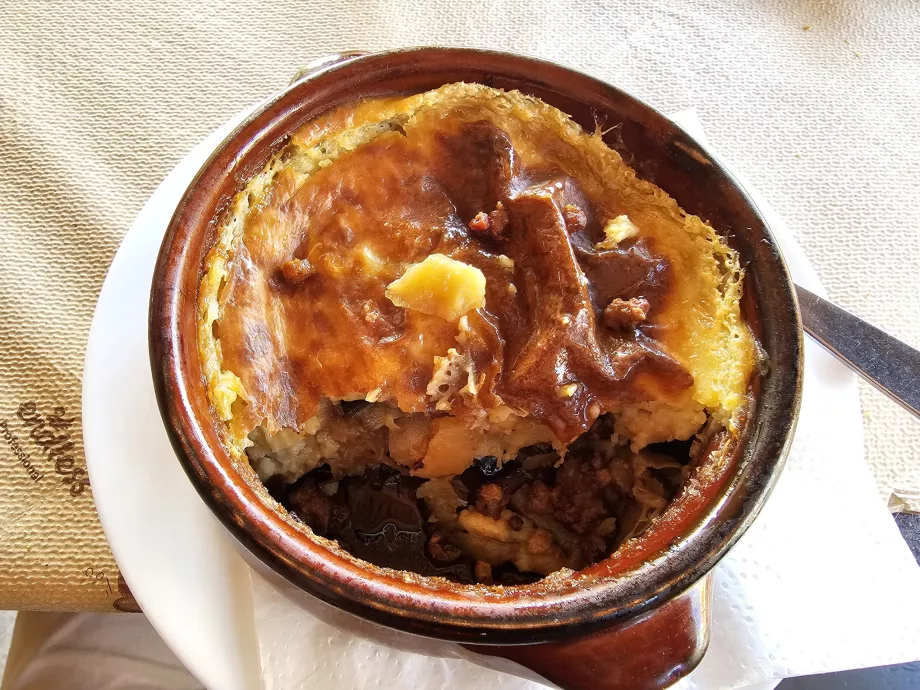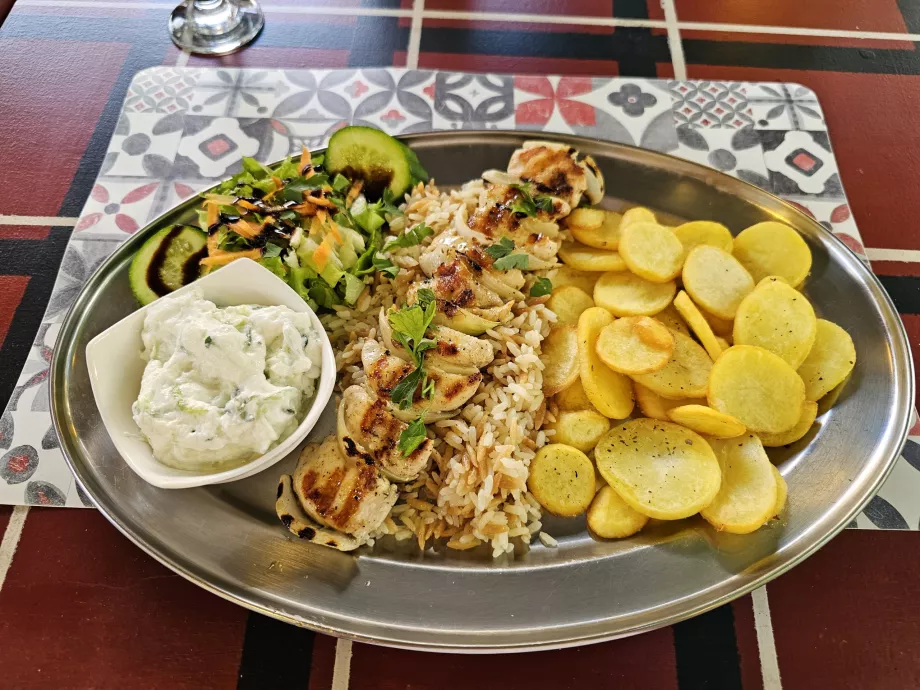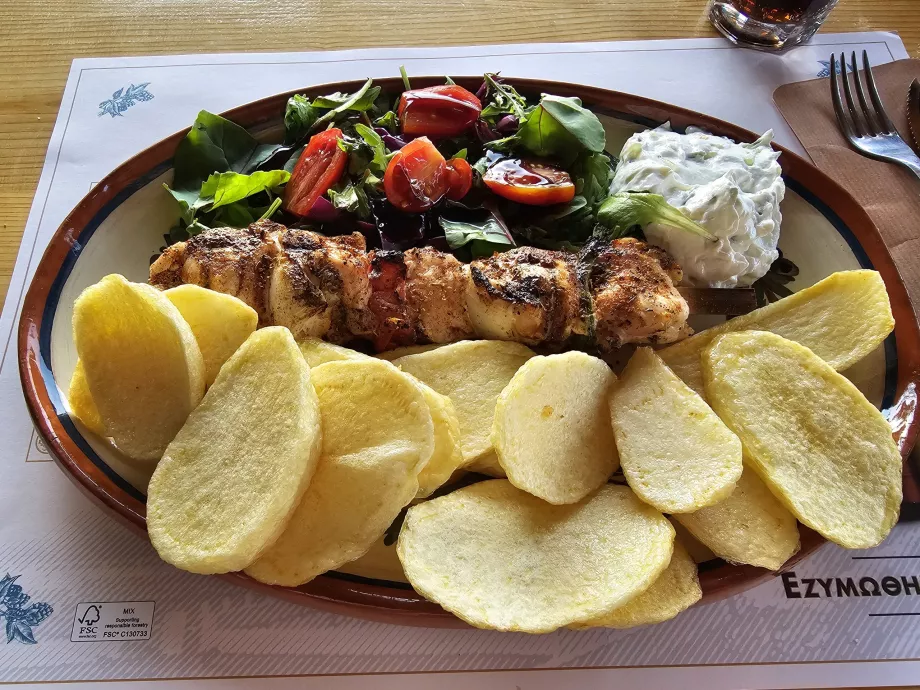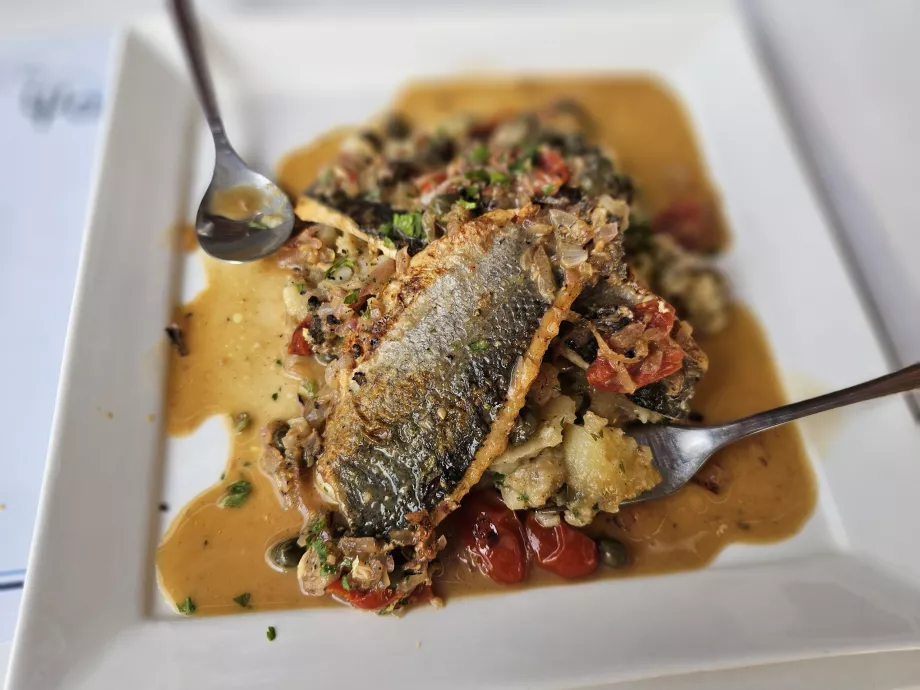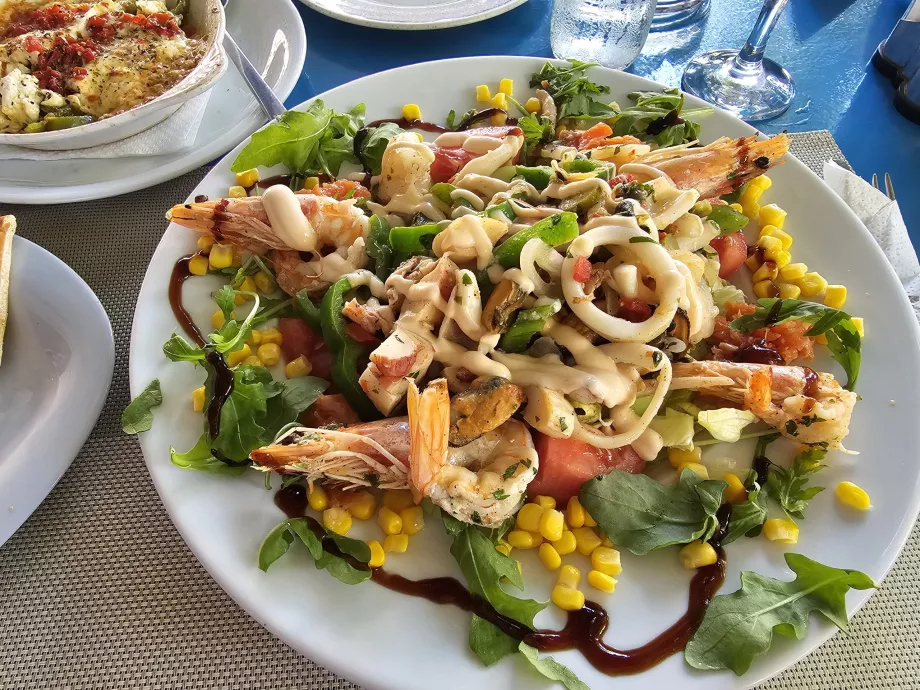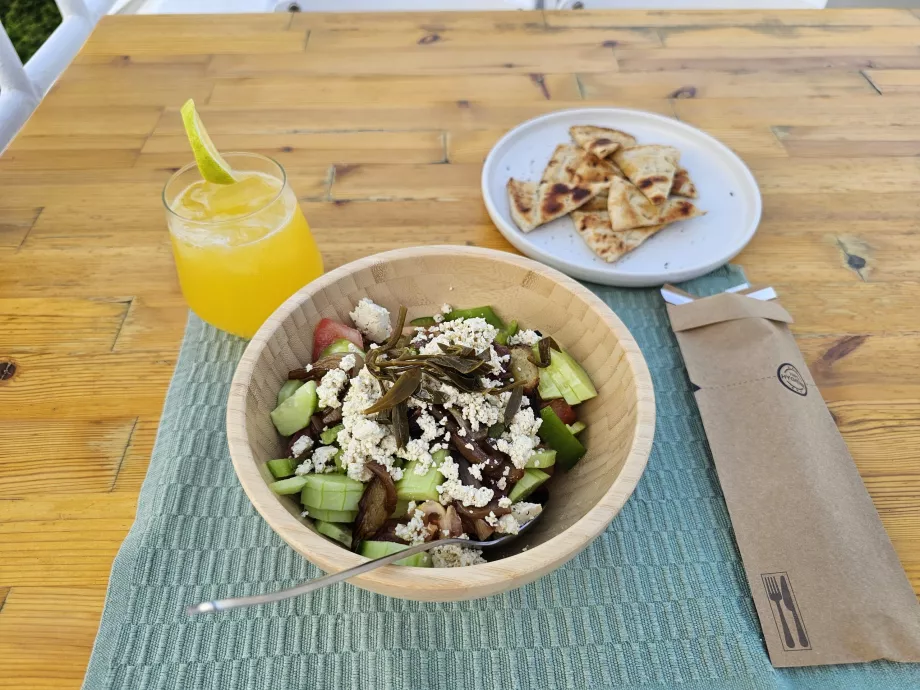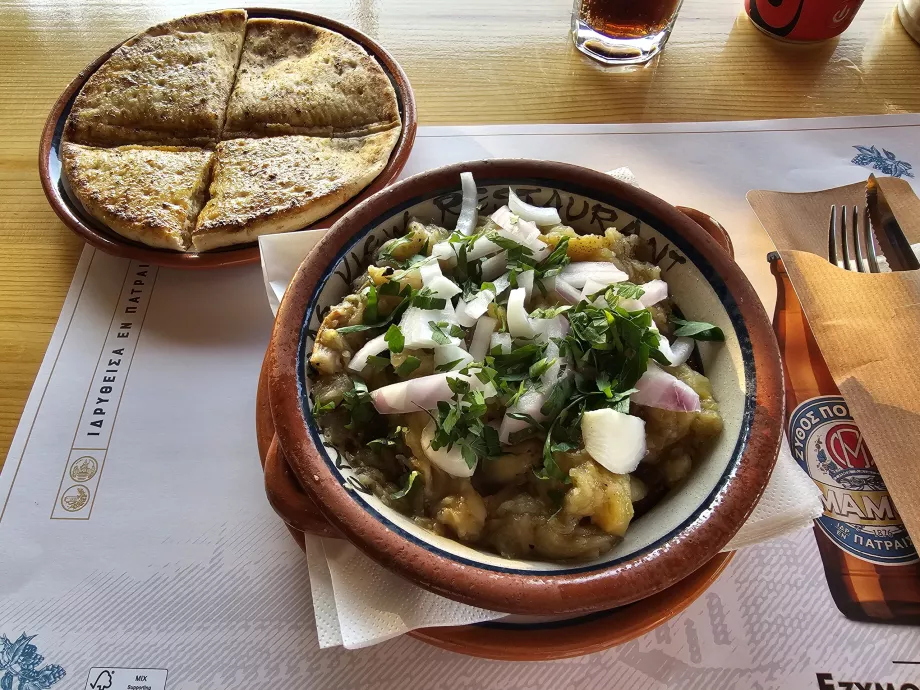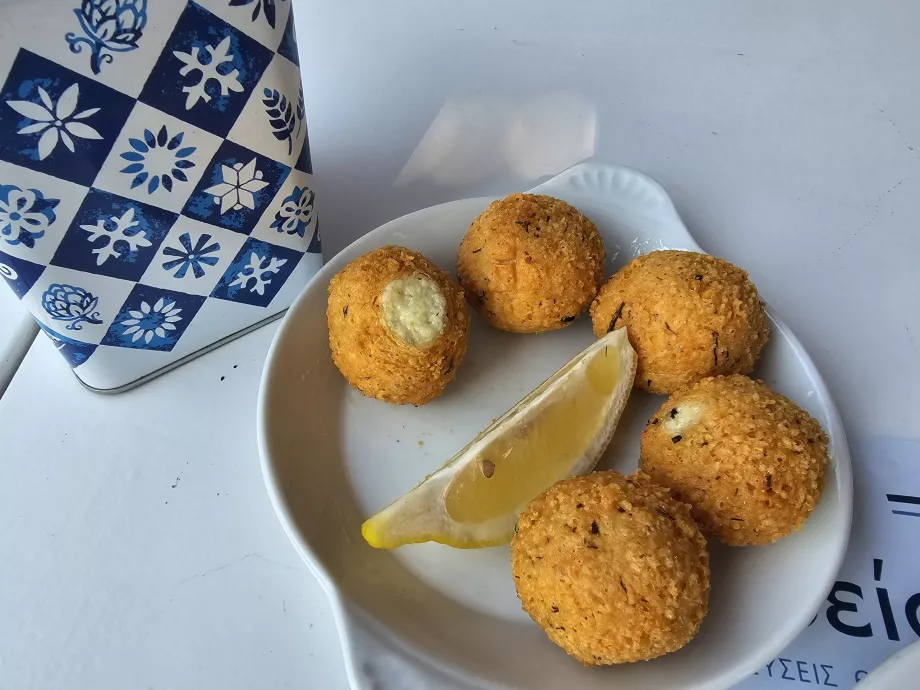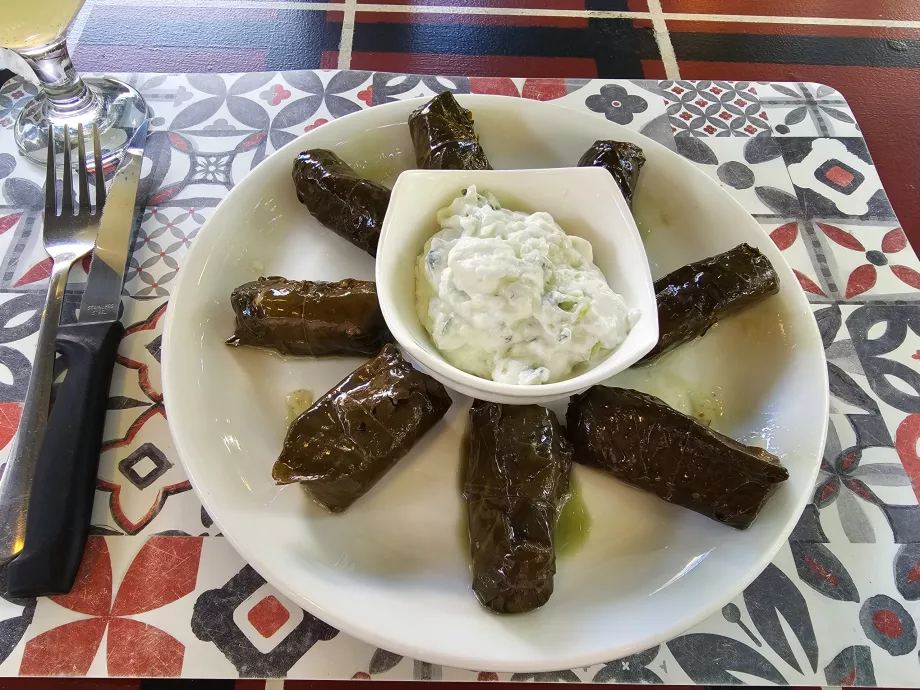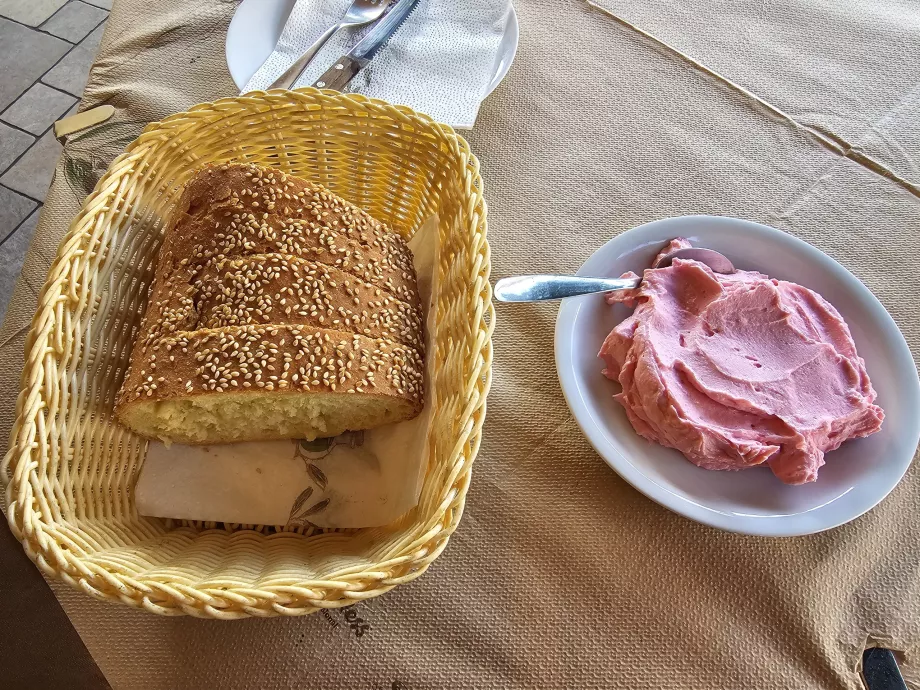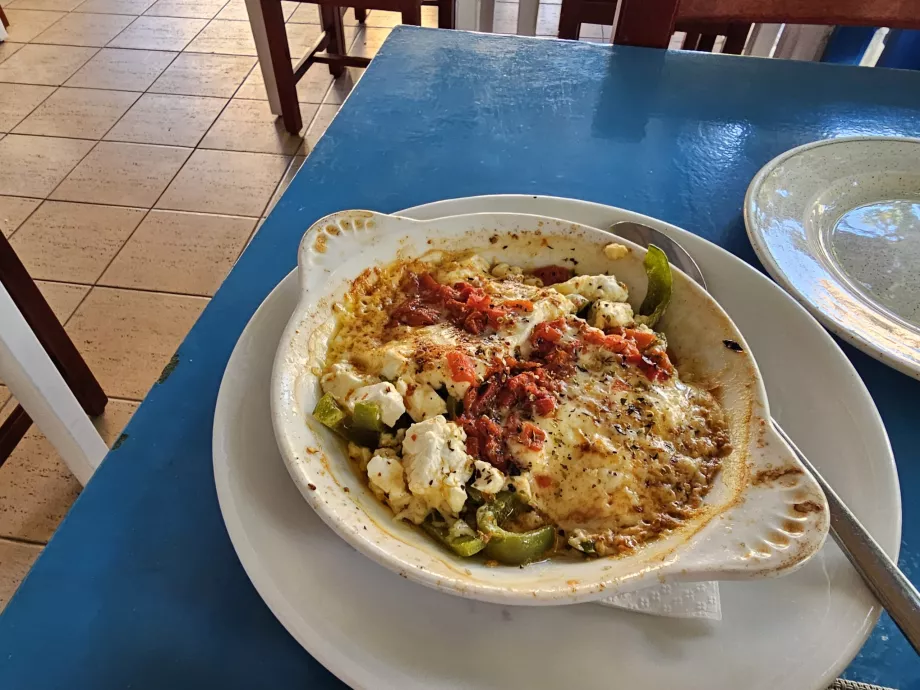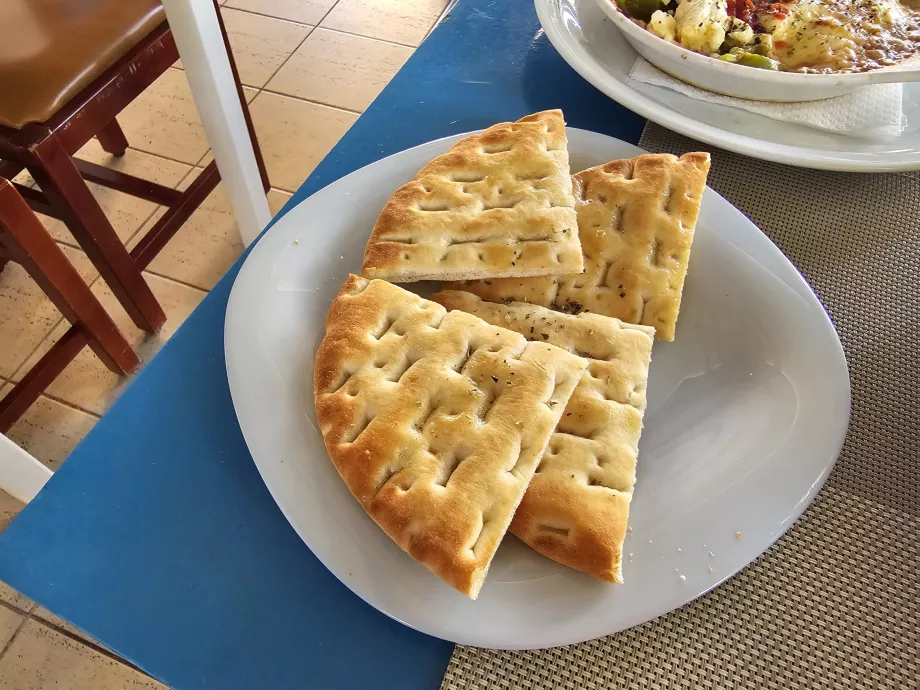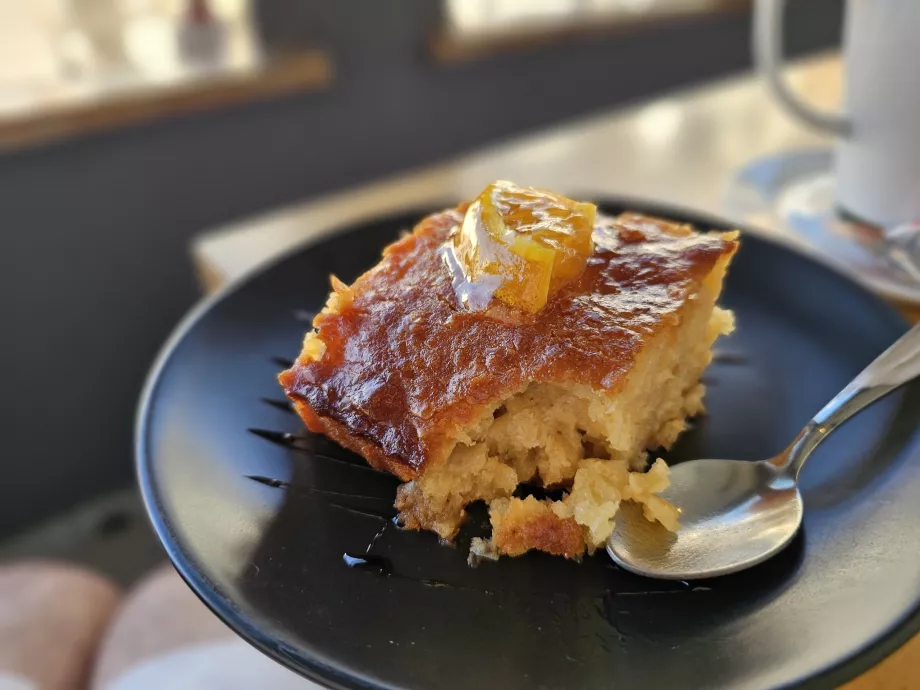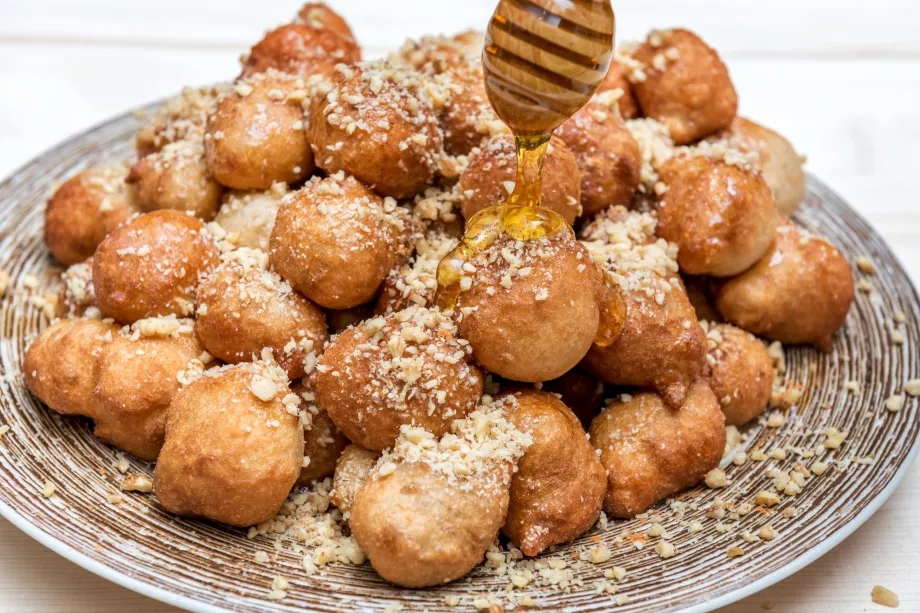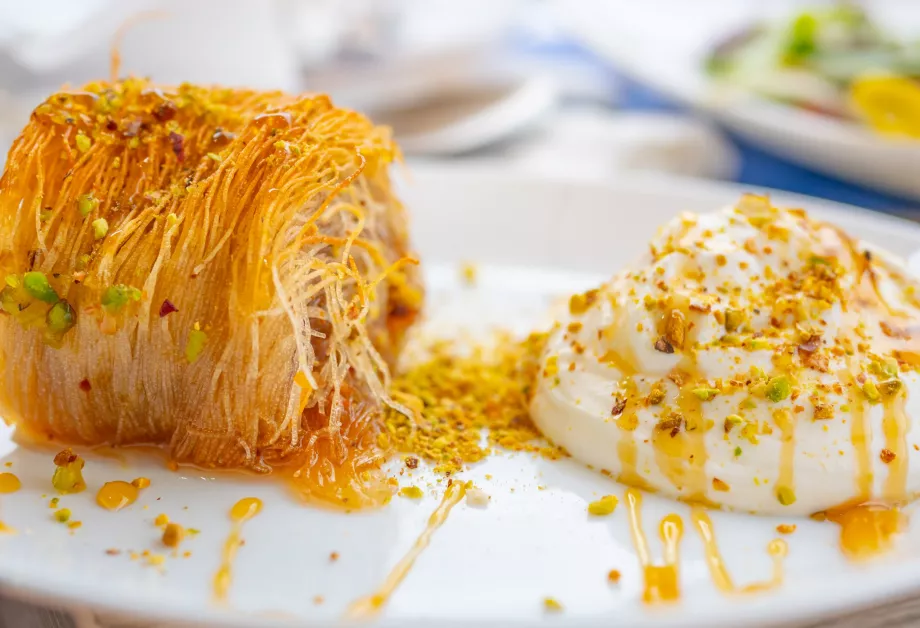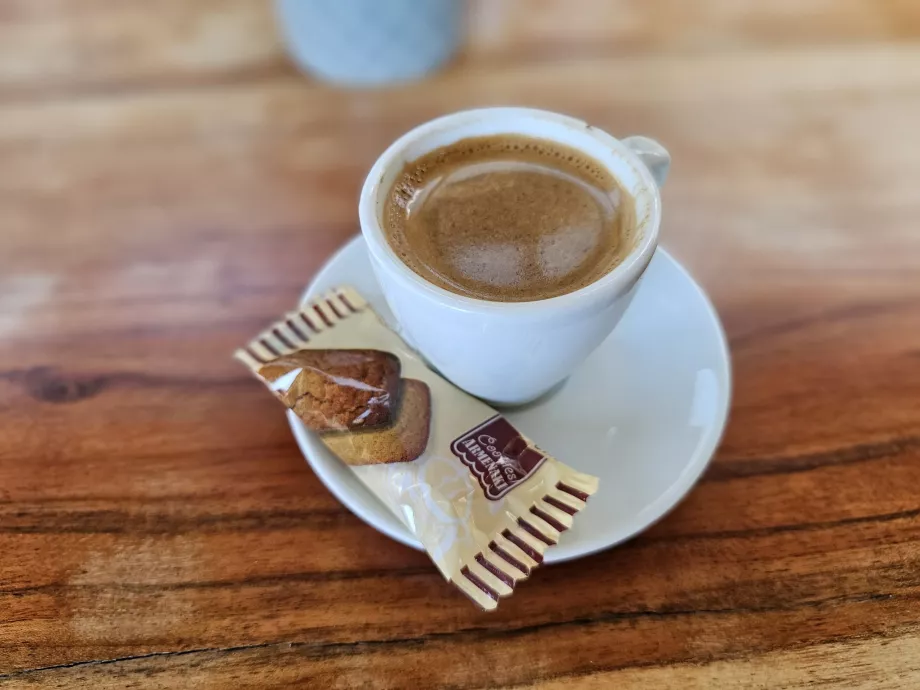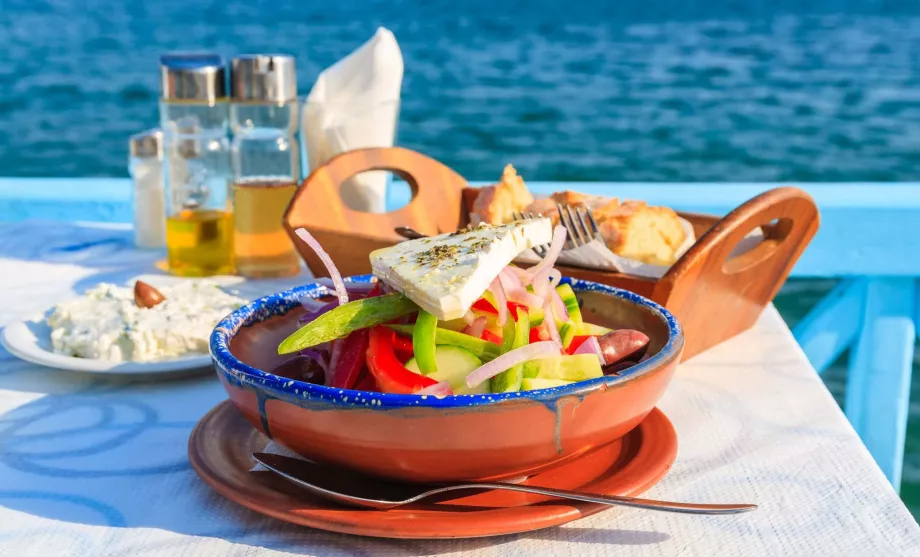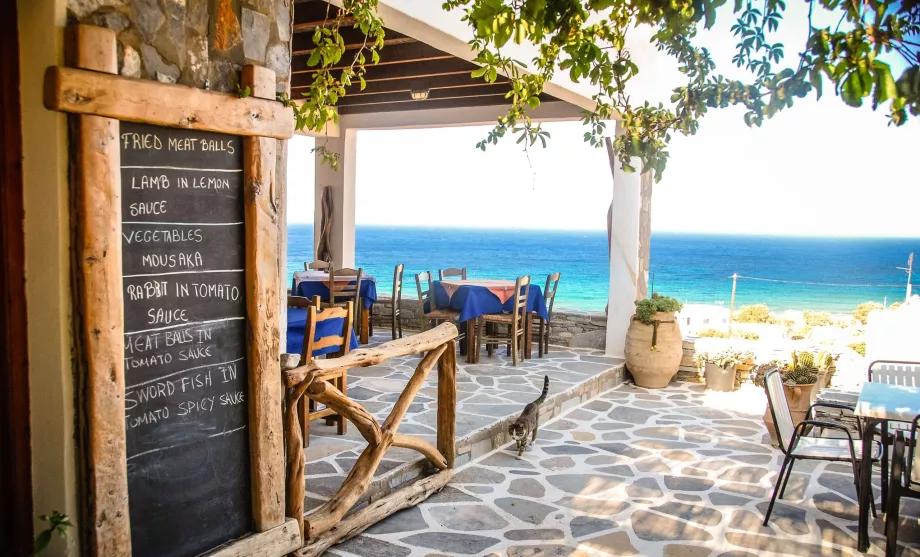Traditional food in Greece

What food should you try in Greece? What is most often sold in local restaurants?
Book accommodation with breakfast
Greek cuisine
Greek cuisine mixes Mediterranean and oriental flavours and is influenced by Turkish influences, rich in garlic, olive oil and special spices. It offers a wide selection of vegetables and fruits.
Fish and meat are almost always grilled, but lamb or mutton is preferred.
Typical vegetables are artichokes, squash, aubergines, courgettes, peppers and hot peppers, usually stuffed or marinated in oil.
The most common drink is wine and coffee, which every Greek loves and indulges in several times a day.
Typical Greek specialties
Greece has given the world several well-known dishes that can be found all over the world. But don't forget to try the lesser-known and perhaps even better Greek specialities. Let's take a look at a selection of the best traditional Greek dishes.
Main dishes
Musaka - one of the most famous Greek dishes, often called "Balkan lasagne". It is several layers of baked eggplant (rarely a bowl of zucchini eggplant) interspersed with lamb and topped with a béchamel sauce.
Gyros - a popular Greek fast-food dish that has spread around the world and is often confused with Turkish kebabs or Arabic shawarma.
The truth is that they are very similar dishes. They both have a similar base, with the meat being slowly roasted on a rotating stick and gradually cut off. While gyros are mainly made from pork and mutton, kebabs are made from chicken, lamb or veal.
The spicing also differs; indeed, the term 'gyros' originally referred only to the seasoning used to flavour the meat, but later became generalised to the dish itself. Greek gyros are usually served with tzatziki sauce and rarely in pita bread.
Souvlaki - after gyros, probably the most popular Greek fast-food, or rather the food you can get anytime and anywhere from the better restaurants to the most run-down food stalls.
Souvlaki are small pieces of meat, usually pork or chicken, which are most often served fried as a skewer. However, many stalls and restaurants offer souvlaki in pita bread, which is a very similar dish to gyros in pita bread.
Fish - Although Greece is more closely associated with the sea than any other European country, and despite the fact that you can find a wide variety of fish and seafood in every Greek restaurant, it is somewhat surprisingly not as popular among Greeks. Seafood may be eaten regularly, but certainly not on a daily basis.
Seafood - apart from fish, of course, all restaurants also offer dishes (mostly salads) of other seafood such as mussels, shrimps and octopus.
Greek salad - the classic Greek salad is ubiquitous and is often eaten instead of a side dish. It can be said to be very similar to the Chopped salad from Bulgaria, only less flavourful. It consists of chunks of feta cheese, tomatoes, peppers, cucumbers, olives and onions.
In addition to the traditional Greek salad, eggplant salad is also very popular.
Starters and side dishes
Tzatziki - probably the most common accompaniment to meat and other dishes. Tzatziki is a dish of filtered yoghurt, cucumbers, garlic, olive oil and a mixture of herbs.
Cheese or meatballs - a very common appetizer available in almost every restaurant.
Dolmades - an excellent light dish for hot days. Dolmades are rolls of steamed vine leaves stuffed most often with a mixture of rice, mint, dill, marjoram and pepper, covered with lemon juice. But they can also be filled with meat or vegetables.
Taramasalata - a well-known pink paste or spread, most often eaten with bread as an appetizer. It is made from salted smoked roe, usually cod or mullet, which is mixed with garlic, onion, lemon juice and sometimes bread crumbs.
Avgolemono - a traditional Greek soup often made on holidays or important occasions. Its base is chicken stock, which is cooked with rice and meat. Its most important ingredients, namely lemon juice and eggs, are added at the very end.
Feta cheese - Greek cheese is one of the oldest cheeses in the world, dating back to the 4th century BC. The most famous is undoubtedly feta cheese, which is made from 70% sheep's milk and 30% goat's milk. Its curd flavour is pleasantly salty and not as aromatic as, say, Balkan cheese.
Baked feta cheese is often eaten as an appetizer.
Pita bread - traditional Greek pita bread is eaten with literally everything, both for main meals and for breakfast or snacks. In a restaurant, you will usually pay a small extra charge for pita bread around 2 eur.
Sweets
Baklava - althoughbaklava is not originally a Greek dessert (it is widespread throughout the Middle East), it is probably the most popular local sweet treat. Small pieces of filo pastry are filled with nuts, honey and syrup.
Portokalopita - a very popular orange cake soaked in a sweet syrup, usually orange. This sweet is one of the most common breakfast options.
Loukoumades - small sweet balls or doughnuts fried in oil are dipped in honey and cinnamon and, like baklava, are ubiquitous.
Kataifi - similar in taste to baklava, but the dough is made into fine noodles that are rolled into a ball or roll, fried in butter and topped with syrup.
Traditional Greek drinks
Retsina - a typical Greek wine (usually white, but can also be rosé) to which pine resin is added, giving it a very specific taste. Retsina is often served with main meals.
Ouzo - the most popular Greek spirit with an alcohol content of up to 48%. It is an aniseed liqueur flavored (besides anise) with other herbs, typically cloves, cinnamon, fennel or coriander. Ouzo is often mixed with water or ice, and Greeks always prepare a small snack of feta cheese, octopus or Greek sausage loukaniko to sip it.
Metaxa - definitely the world's most famous Greek drink. Metaxa is distilled from several types of wine and has an alcohol content of around 38%. The quality of Metaxa is rated with stars, from three (the least) to twelve (the most, but these Metaxas are rare and their price corresponds to that). The best compromise between price and quality is 5* Metaxa.
Greek coffee - a specific preparation method similar to Turkish coffee. The coffee beans are brewed in a java at a low temperature, which results in a creamy foam called "kaimaki".
How to eat like a local
Don't miss a visit to a typical Greek taverna, where you can sample all the Greek specialties and maybe get a dessert as a treat.
Greeks are very fond of going to tavernas, and unless you're in a downright touristy restaurant in a hotel or in the middle of a tourist centre, there will often be more Greeks than foreign visitors in a taverna even in resorts.
You can find small family-run tavernas in every village, even the smallest, in Greece.
Order meze
If you also want to dine like a local, order several types of food - called meze (a bit like Spanish tapas) - and then let them circulate around the table. And don't split the price, in Greece you pay in total.
Bakeries and cafes
Another attraction for foodies are the excellent bakeries, which, in addition to fresh bread, offer a huge variety of savoury and salty treats you won't be able to resist.
There are also cafés on every corner with typical Greek sweets, where the locals love to have breakfast.
Breakfast usually consists of coffee only and after that the Greek usually orders some kind of sweet, with another coffee or cappuccino.
If you want to experience the true Greek atmosphere, go to the markets, which are also held in small towns, at least once a week. For example, feta cheese or real Greek yoghurt or honey are delicious.
Tip at the restaurant
Generally in Greece, the tipping culture is not very entrenched and especially in the less touristy tavernas, tipping is not expected at all and there is no faux-pas if you don't leave any.
Tipping is more common in tourist locations, but there is no socially acceptable limit. Rather, it's usually just rounded up to the nearest well-calculated amount.
Usual prices in restaurants
Prices vary depending on the location and season, but usually a main course with meat starts at 9 eur outside the resorts, a salad will set you back 5 eur and a coffee or pint of draft beer will cost from 2,50 eur.
It's more expensive on the islands and in more touristy locations. A typical moussaka will set you back around 8 eur to 12 eur, fish and seafood around 20 eur, while the cheapest souvlaki is between 6 and 10 eur.
If you go out for a night of fun, expect to pay about 10 eur for a cocktail.
Before you go, be sure to check the internet for recommendations for certain taverns that are popular in the area, and at least try to book in advance. If you don't, be prepared for a wait of several dozen minutes. Some taverns literally have queues.
Any questions left?
If you have any questions or comments about the article...

